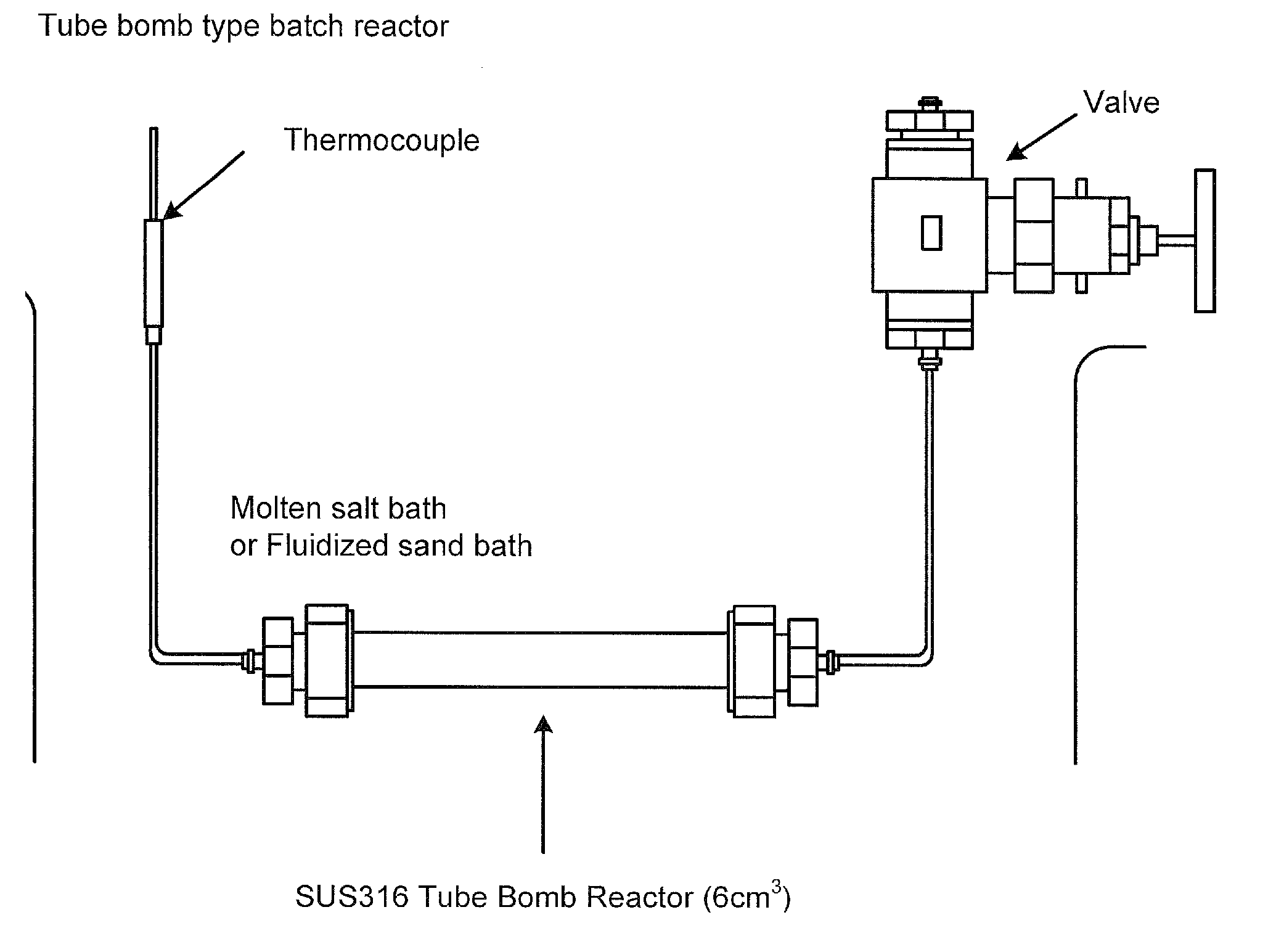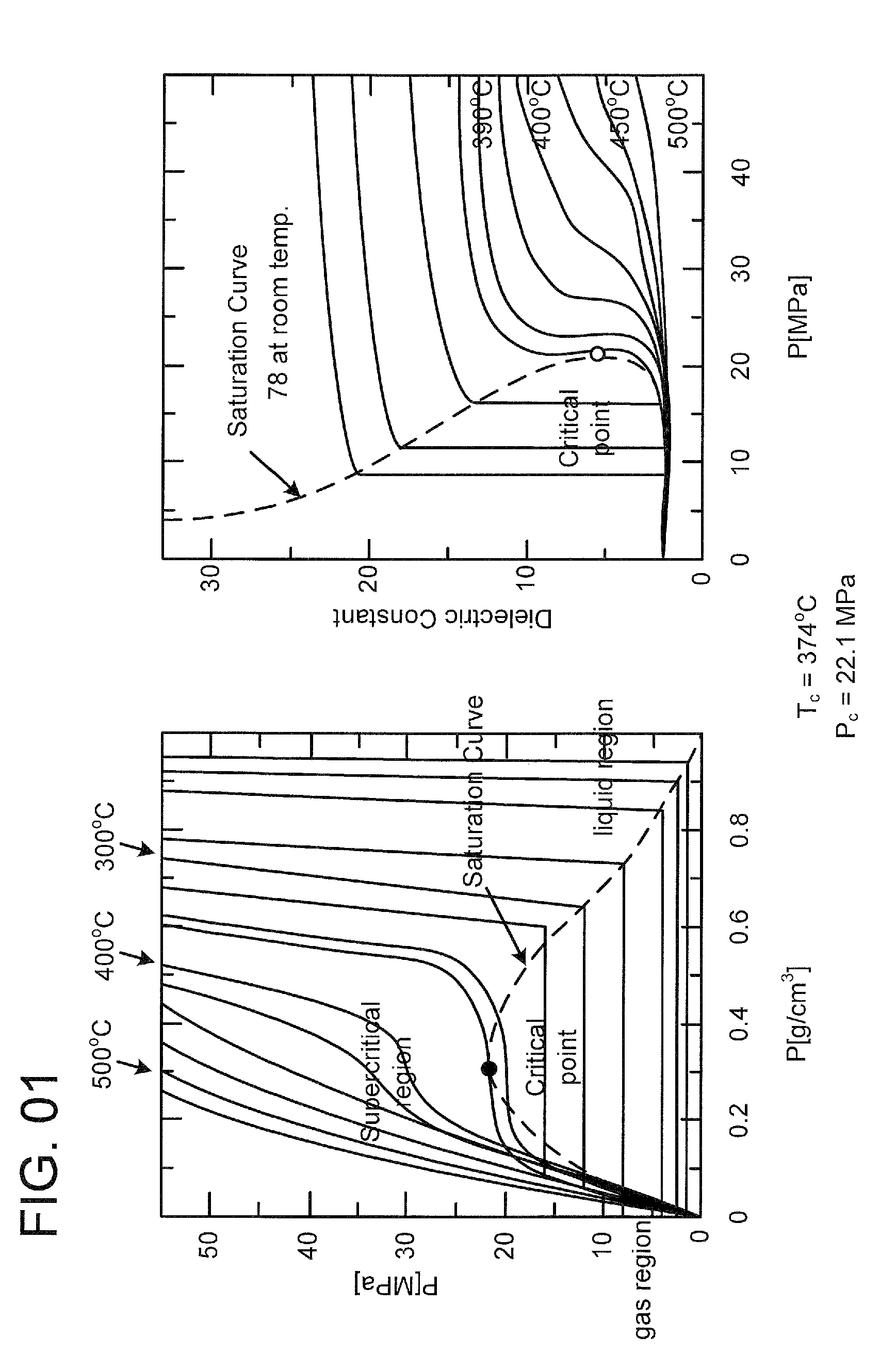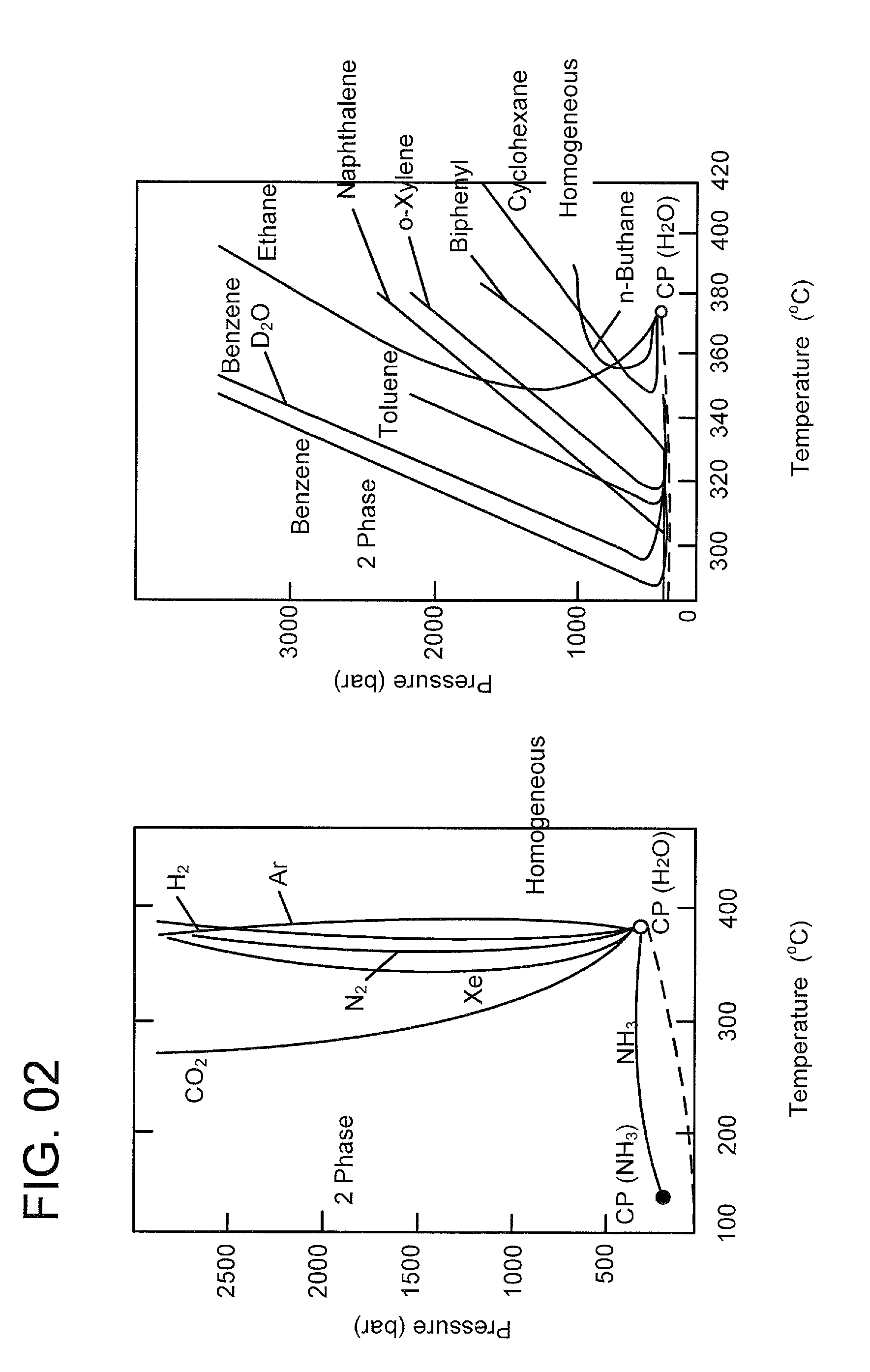Organically modified fine particles
a technology of organic materials and fine particles, applied in the field of organically modified fine particles, can solve the problems of not reporting the method of a reaction between an organic material and an inorganic material, the inability of known reactions to be used for the surface modification of oxide nanoparticles in water, and the inability to achieve easy and surely transfer
- Summary
- Abstract
- Description
- Claims
- Application Information
AI Technical Summary
Benefits of technology
Problems solved by technology
Method used
Image
Examples
example 1
Organic Modification of Metal Oxide Fine Particles in High-Temperature, High-Pressure Water)
[0135]An experiment was carried out using a 5 cc-tubular autoclave (tube bomb reactor). TiO2 nanoparticles 0.1 g was charged in a reactor tube with pure water 2.5 cc and hexanal 0.1 cc. The reactor tube was put in a heating furnace preliminarily set to 400° C., and heated. The pressure is 390 bar on the assumption of pure water. It took 1.5 min to raise the temperature. The reaction was carried out for 10 min. The reaction was stopped by putting the reactor tube to cold water. The product was recovered by repeating washing with water and washing with chloroform twice. The recovered product is shown on the right of FIG. 8. In case of using no hexanal, the recovered product is in a state suspended in water as shown in the left of FIG. 8. This is caused by generation of hydrophilic groups. Such a remarkable difference cannot be observed only by mixing a modifying agent without reaction, showing ...
example 2
Organic Modification of Metal Oxide Fine Particles in High-Temperature, High-Pressure Water
[0137]An experiment was carried out using a 5-cc tubular autoclave (tube bomb reactor) similarly to Example 1. SiO2 nanoparticles 0.1 g was charged in a reactor tube with pure water 2.5 cc and hexylamine 0.1 cc. The reactor tube was put in a heating furnace preliminarily set to 400° C., and heated. The pressure is 390 bar on the assumption of pure water. It took 1.5 min to raise the temperature. The reaction was carried out for 10 min. The reaction was stopped by putting the reactor tube to cold water. The product was recovered by repeating washing with water and washing with chloroform twice. In case of using no hexylamine, the recovered product is in a state suspended in water similarly to Example 1. This is caused by generation of hydrophilic groups. In contrast, when the modification was performed, the particles were collected to the interface between chloroform and water. It was found the...
example 3
Amino Acid Modification of Metal Oxide Fine Particles in High-Temperature, High-Pressure Water
[0138]An experimental reaction was carried out using a 5 cc-tubular autoclave (tube bomb reactor).
[0139]SiO2 nanoparticles 0.1 g was charged in a reactor tube with pure water 2.5 cc and cysteine 100 mg. The reactor tube was put in a heating furnace preliminarily set to 400° C., and heated. The pressure is 390 bar on the assumption of pure water. It took 1.5 min to raise the temperature. The reaction was carried out for 10 min. The reaction was stopped by putting the reactor tube to cold water. The recovered particles are perfectly dispersed in water more satisfactorily than in the suspended state before reaction. This shows that coagulation of SiO2 is prevented by donation of hydrophilic groups to enhance the dispersibility.
[0140]Similarly to Examples 1 and 2, such a remarkable difference cannot be observed only by mixing a modifying agent without reaction, showing that this is not resulted...
PUM
| Property | Measurement | Unit |
|---|---|---|
| pressure | aaaaa | aaaaa |
| temperature | aaaaa | aaaaa |
| diameter | aaaaa | aaaaa |
Abstract
Description
Claims
Application Information
 Login to View More
Login to View More - R&D
- Intellectual Property
- Life Sciences
- Materials
- Tech Scout
- Unparalleled Data Quality
- Higher Quality Content
- 60% Fewer Hallucinations
Browse by: Latest US Patents, China's latest patents, Technical Efficacy Thesaurus, Application Domain, Technology Topic, Popular Technical Reports.
© 2025 PatSnap. All rights reserved.Legal|Privacy policy|Modern Slavery Act Transparency Statement|Sitemap|About US| Contact US: help@patsnap.com



